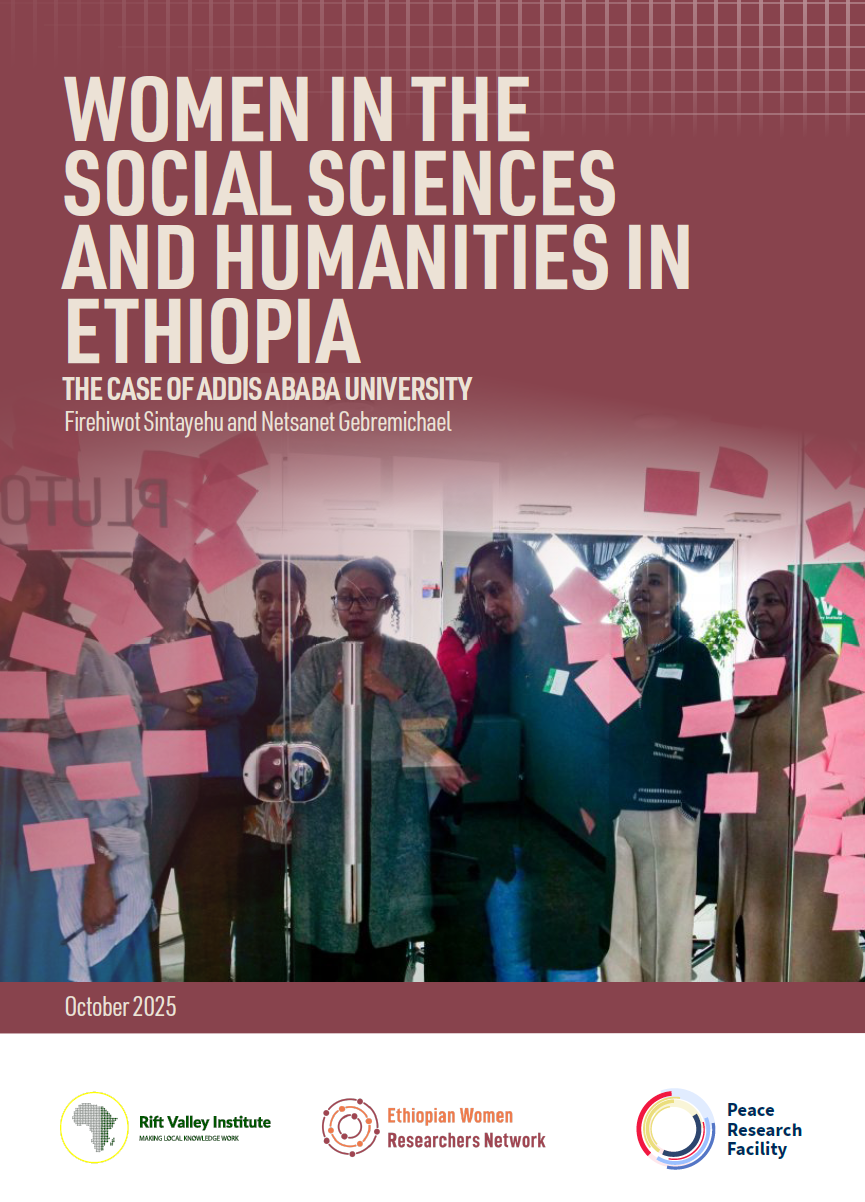Key points The LAPSSET project has transformative potential for the neglected north of Kenya and for East African regional integration. A major challenge is safeguarding the environment, and the rights and livelihoods of those whose lands the project will…
RVI publishes books, research reports, research papers, briefings and meeting reports in a range of formats. Publications cover policy, research, arts, culture and local knowledge in the countries of eastern and central Africa. Research publications—books, reports and papers—are peer-reviewed. Some RVI publications are also available in French and/or Arabic.
The RVI is a signatory of the Budapest Open Access Initiative (2001); all publications are free for download in PDF format under Creative Commons licences. The views expressed in books and reports published by the RVI are those of the authors, not the Institute.
SEARCH
PUBLICATION TYPE
LANGUAGE
REGION
COUNTRY
This briefing examines the emergence of the Somali migration route to Uganda and its significance in the long history of Somali migration in East Africa. It discusses the factors underlying the decision-making processes of Somali refugees in relation to…

- By Michel Thill
- Download
Points clés Le Projet Usalama de l’Institut de la Vallée du Rift (RVI) a pour mission de pallier l’absence d’informations détaillées sur les groupes armés congolais. L’Institut a publié 14 rapports et documents d’information sur les groupes armés qui opèrent…
تُعتبر كفيا قنجي الواقع على الطرف الغربي الأقصى للسودان نقطة إلتقاء رئيسية بين دارفور وجنوب البلاد؛ وتخضع هذه المنطقة الغنية بالمعادن حالياً لإدارة جنوب دارفور، لكن من المتوقع إعادتها إلى مقاطعة راجا في جنوب السودان بموجب بنود اتفاقية السلام…
‘In Somalia, land issues are particularly complex. Those involved in both policy and practice need to understand this complexity better if durable political solutions are to be identified and property rights for individuals and communities secured. Lee Cassanelli explains…
Key points • Efforts to negotiate peace in South Sudan have been hindered by the lack of a coherent international approach such as the Inter-Congolese Dialogue eventually enjoyed. • IGAD’s assumption of a mediating rather than a facilitating role…

- By Nanjala Nyabola
- Download
Key points • A sudden, forced repatriation of Dadaab’s 350,000 Somalis would violate Kenyan and international law, could destabilize Somalia and ultimately undermine Kenyan security. • Although Kenya will not forcibly repatriate Dadaab’s Somali residents, the government’s policy is…
In South Sudan delays in the making of the national constitution have led to public concern. My Mother Will Not Come to Juba: South Sudanese debate the constitution is the record of three evenings of public lectures at the University of…
Key points • The political crisis in Burundi risks escalating into civil war, with an ethnic dimension. • The response from governments in the region has been muted and equivocal. • Donor countries have cut back aid, which may…
This Usalama report by Koen Vlassenroot outlines the historical dynamics behind the armed movements in South Kivu, focusing on the period before and leading up to the First Congo War. The province of South Kivu has been at the…
Recent Publications

Aid and Conflict Sensitivity in Contemporary Ethiopia
November 17, 2025
This study assesses conflict sensitivity practices among humanitarian, development and peacebuilding (HDP) actors in Ethiopia. It seeks to raise awareness and foster a deeper understanding of the evolving aid landscape in the country while analysing the challenges that affect conflict-sensitive

Enhancing the Role of Borderland Communities in Ethiopia’s Foreign Policy
October 15, 2025
Ethiopia’s borderland communities (BLCs) have historically influenced the country’s relations with its neighbours. These peripheral regions often serve as hubs for cross-border trade, repositories of natural resources and, at times, flashpoints of conflict. Surrounded by six neighbouring countries – Djibouti,

Women in the Social Sciences and Humanities in Ethiopia: The case of Addis Ababa University
October 10, 2025
This preliminary assessment is part of the launch exercise of the Ethiopian Women Researchers’ Network (EWNET). Focusing on Addis Ababa University as a pioneering higher institution in the country, the study looks into the status of women within these disciplines








